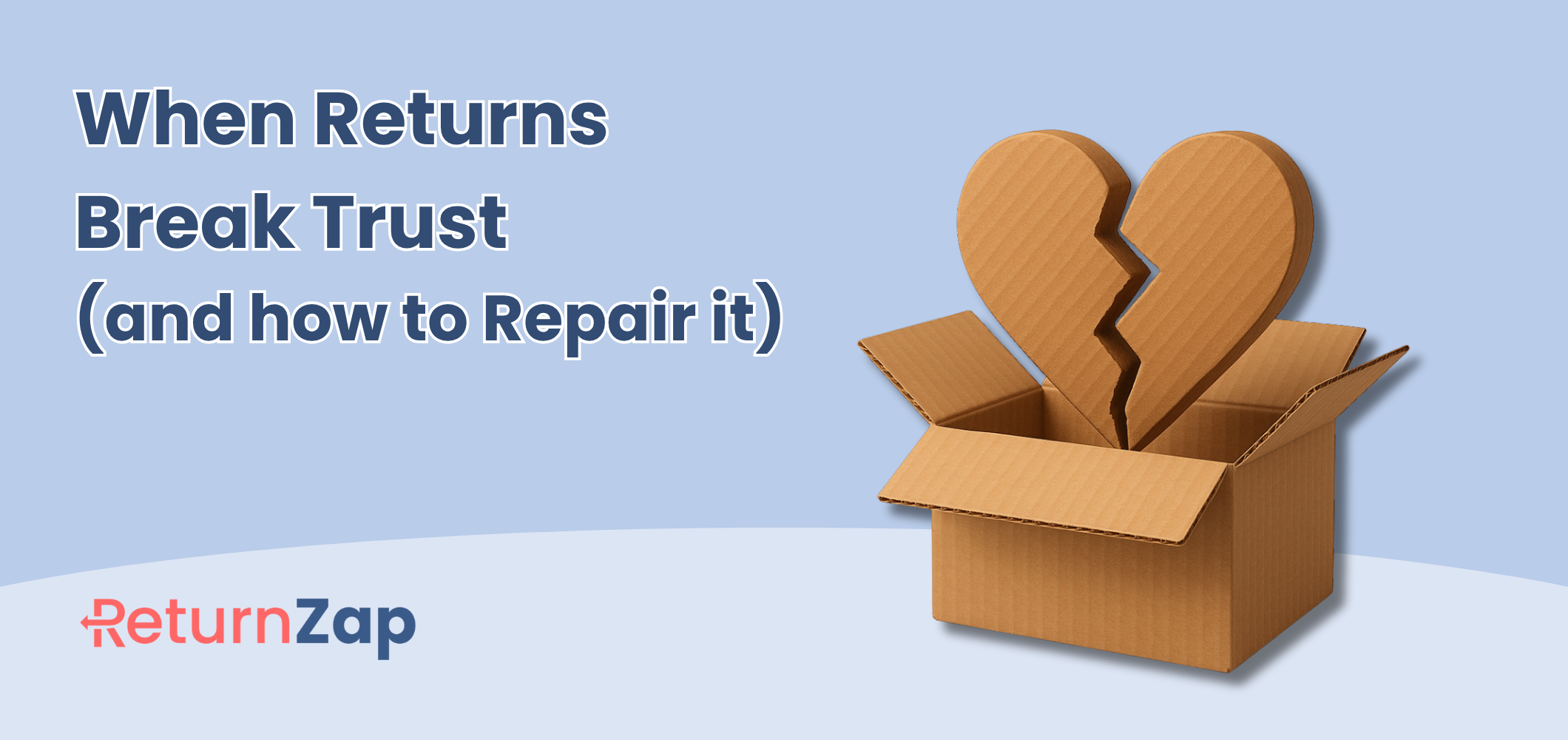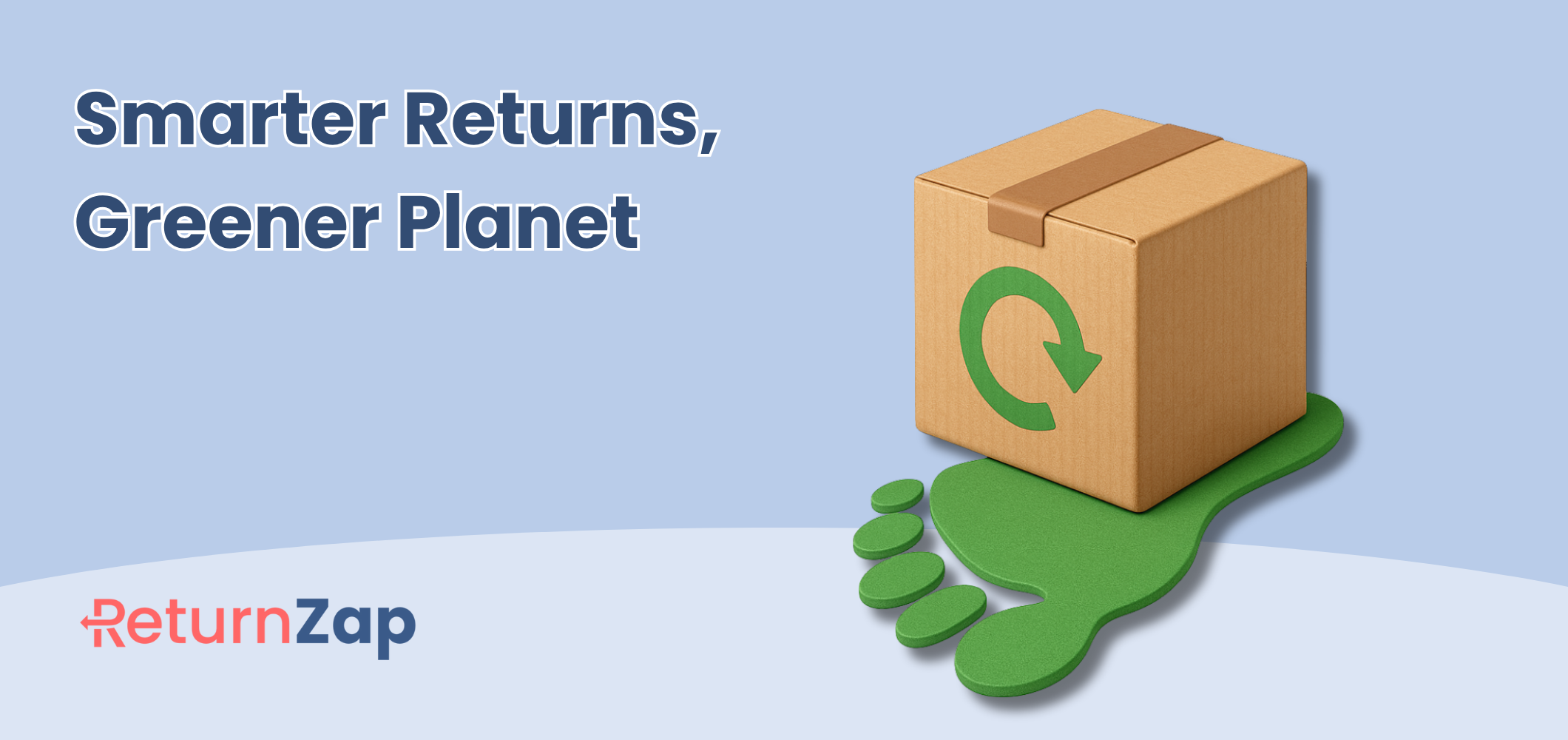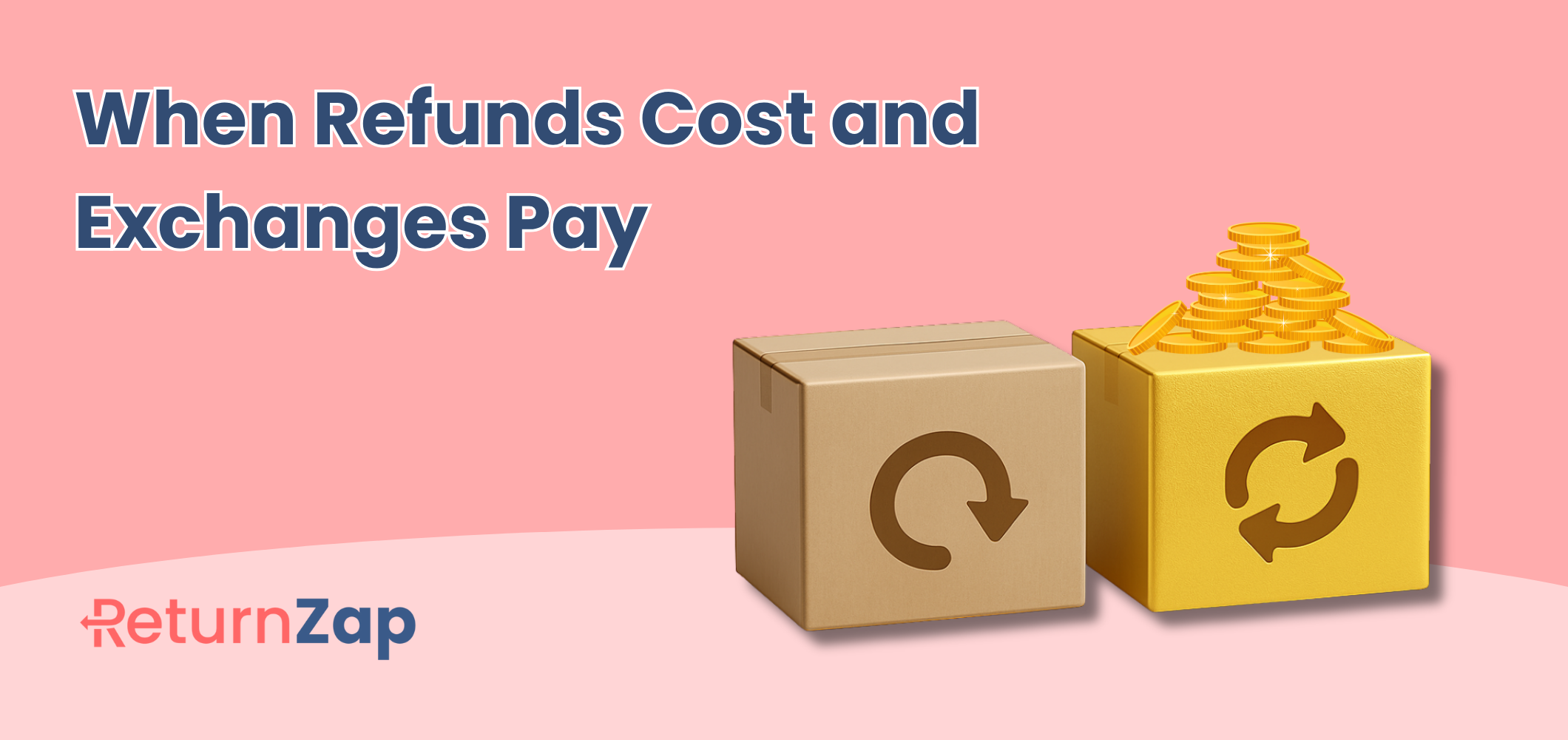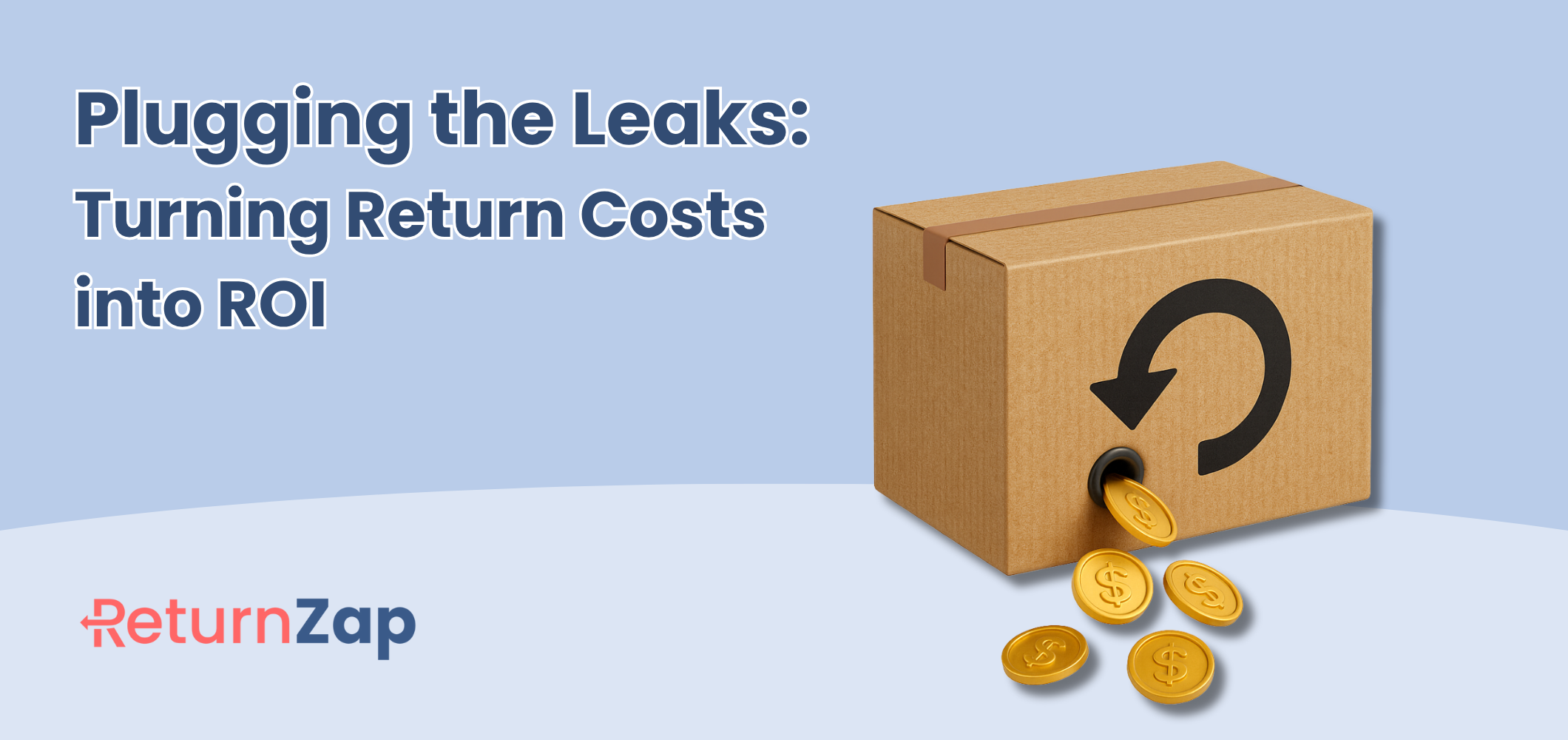The Customer Who Never Came Back: Why Returns Break Loyalty (And How to Win Them Back)

Every return costs you twice.
First, the emotional cost: a frustrated customer who feels let down, inconvenienced, or ignored. That one sour experience is often enough to end the relationship forever.
Second, the financial cost: returns eat into margins, tie up logistics, and raise acquisition costs, because the customer you lost now has to be replaced by a new one. Studies show it can cost 5-7 times more to acquire a new customer than to keep an existing one.
What should have been a simple transaction - a return - too often becomes a turning point. And more often than not, it’s the last time that customer ever shops with you.
Returns aren’t just about logistics. They’re about loyalty. And if you mishandle them, you’re not just losing a sale, you’re losing a relationship.
Is your brand losing customers at the returns stage? Discover how ReturnZap simplifies loyalty-driven returns.
What You'll Learn
In this article, you’ll discover why poorly handled returns can quickly turn into loyalty killers and how the hidden psychology behind customer expectations plays a critical role in shaping their perception of your brand. We’ll explore how leading companies have transformed the return process into powerful moments of trust-building, and outline practical steps you can take to design a loyalty-focused return policy that keeps shoppers coming back. Finally, we’ll show you how tools like ReturnZap make it possible to scale returns efficiently, without ever sacrificing customer happiness.
Why Returns Break Loyalty
1. The Emotional Disconnect
Customers don’t see returns as “business transactions.” They see them as a test of trust.
- A complicated return process makes them feel punished.
- Long refund delays create frustration and doubt.
- Poor communication during returns leads to anxiety.
The result? The bond between brand and customer weakens, often permanently.
A 2023 UPS study found that 73% of shoppers say returns directly impact whether they will shop again with a retailer.
Related read: Simplifying the Return Process: A Guide to Automated Shopify Returns
2. The “One Bad Experience” Rule
It takes 5-7 positive experiences to build trust, but just one bad return to erase it.
That’s why many brands notice “silent churn”: customers who never complain, but quietly disappear.
Think of Amazon vs. a small boutique. Amazon’s one-click return process feels effortless, while many smaller brands still ask customers to print labels, pay shipping, or wait weeks for refunds.
The lesson is simple: a single poor return can undo months of marketing, nurturing, and positive brand touchpoints.
3. The Financial Domino Effect
When returns break loyalty, the costs ripple far beyond the refund:
- Lost lifetime value (LTV) of the customer.
- Higher customer acquisition cost (CAC) to replace them.
- Damaged word of mouth, as unhappy customers often share their stories online.
If even 10% of your returns lead to churn, the financial impact is massive. A brand with $1M in annual revenue could easily lose $100,000+ in future sales just from mishandled returns.
What Most Brands Do Wrong
Despite the stakes, many brands still mismanage returns. Common mistakes include:
Treating returns as a cost center.
Returns are often buried under “operations” rather than seen as brand moments.
Making customers do the work.
Prepaid return labels? Often missing. Instructions? Buried in fine print.
Ignoring communication.
Customers hate being left in the dark. “Has my item arrived? When will I get my refund?” Silence kills trust.
How to Turn Returns Into Loyalty Builders
To turn returns into loyalty-building moments, the first step is to make the process effortless. Wherever possible, offer free return shipping and provide printless QR code options so customers can avoid the hassle of printing labels. Keep instructions clear, simple, and frictionless to reduce frustration.
Equally important is proactive communication. Automated updates such as, “We received your return, your refund is being processed,” reassure customers and eliminate uncertainty. Setting clear refund timelines, and delivering on them, shows reliability and builds trust.
Finally, don’t just stop at refunds. Offer attractive alternatives such as easy exchanges for different sizes or styles. This not only softens the disappointment of a return but also encourages customers to make another purchase, strengthening their connection to your brand.
Further information you will get here: Offer Bonus Store Credit for Shopify Returns
Returns are more than transactions, they’re a source of insight. Each one tells you something valuable about your business. If customers are consistently returning items due to sizing issues, it’s a sign that your product descriptions need more clarity. A high number of damaged goods points to packaging problems, while frequent defects often highlight weaknesses in your supply chain that need closer attention. Instead of viewing returns as a drain on profits, treat them as free customer feedback, real-world signals that can guide improvements, reduce future returns, and strengthen customer trust.
Supporting Case Study
By adopting ReturnZap, Earth Uniform has transformed returns from a pain point into a competitive advantage:
- Time savings: Automation removed the need for staff to manually approve and process every return, reducing seasonal training overhead.
- Reduced errors: Consistent workflows mean fewer mistakes by temporary staff and fewer customer complaints.
- Cost optimization: Smart rules ensure customers cover exchange shipping while faulty-item claims are handled with photos, eliminating unnecessary logistics costs.
- Faster stock recovery: Returned items are restocked and resold quickly, minimizing the risk of unsold seasonal stock.
- Customer satisfaction: Parents enjoy a seamless experience - matching the convenience they expect from modern online retailers.
- Scalability: With ReturnZap, Earth Uniform can continue expanding beyond 80 schools to hundreds, without adding significant staff headcount.
The Future of Returns: Loyalty as the Core Metric
In a world where customer acquisition costs are skyrocketing, keeping the customer you already have is priceless. If your return process is slow, complicated, or unfriendly, you’re leaving money on the table, and sending loyal customers straight to your competitors.
But if you design returns as trust-building touchpoints, you turn what’s often the worst part of the journey into one of the most powerful.
For more background use this blog: Returnless Refund: Boosting Customer Loyalty in Retail
Ready to stop losing customers at the return stage?
Start Your Free ReturnZap Trial Today
Join hundreds of other Shopify merchants successfully managing their returns with ReturnZap




